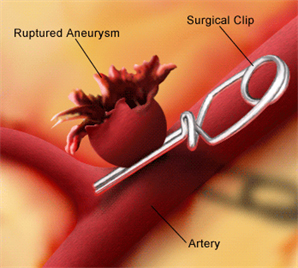
Aneurysm
An aneurysm occurs when an artery’s wall weakens and causes an abnormally large bulge. This bulge can rupture and cause internal bleeding. Although an aneurysm can occur in any part of your body, they’re most common in the:
- brain
- aorta
- legs spleen
What causes an aneurysm?
Although the exact cause of an aneurysm is unclear, certain factors contribute to the condition.
For example, damaged tissue in the arteries can play a role. The arteries can be harmed by blockages, such as fatty deposits. These deposits can trigger the heart to pump harder than necessary to push blood past the fatty buildup. This stress can damage the arteries because of the increased pressure.
Atherosclerotic disease
Atherosclerotic disease can also lead to an aneurysm. People with atherosclerotic disease have a form of plaque buildup in their arteries. Plaque is a hard substance that damages the arteries and prevents blood from flowing freely.
High blood pressure
High blood pressure may also cause an aneurysm. The force of your blood as it travels through your blood vessels is measured by how much pressure it places on your artery walls. If the pressure increases above a normal rate, it may enlarge or weaken the blood vessels.
Blood pressure for an adult is considered normal at or below 120/80 mm Hg, or millimeters of mercury.
A significantly higher blood pressure can increase the risk for heart, blood vessel, and circulation problems. Higher-than-normal blood pressure doesn’t necessarily put you at risk for an aneurysm.